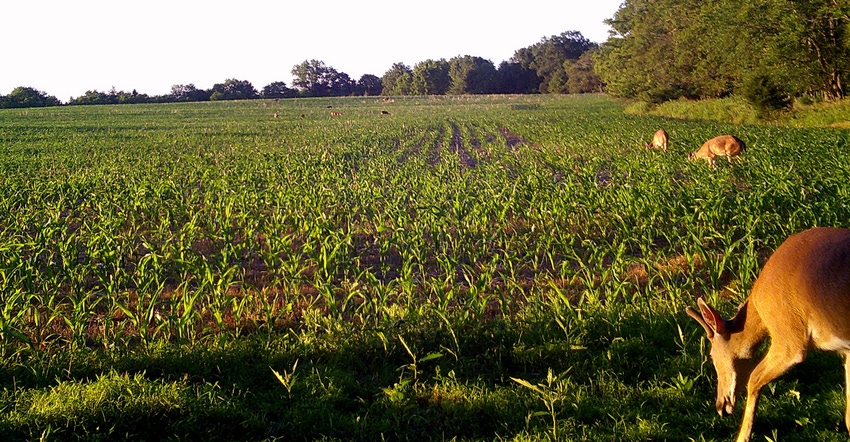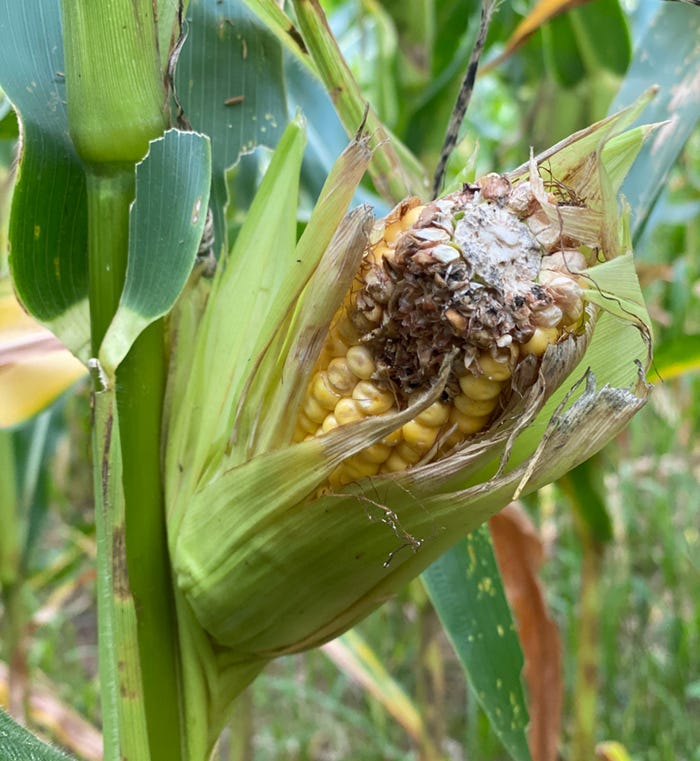June 8, 2022

A new study put out by Rutgers Cooperative Extension and the New Jersey Agricultural Experiment Station estimates the financial costs of deer damage in 2019 at nearly $1.3 million among a sample group of 27 New Jersey farmers.
Through interviews conducted between October 2020 and March 2021, the authors were able to determine this “conservative estimate” by documenting the farmers’ experiences with white-tailed deer.
The report is titled, “White-Tailed Deer and the Hidden Costs to Farmers’ Livelihoods: A Case Study of New Jersey Stories.”
History of damage
From stories that date back to the 1960s, farmers highlighted the environmental damage, safety concerns, management challenges and impacts to their operations as deer numbers in the state grew, leading one case-study farmer to declare, “The deer take 25% of every paycheck.”
However, not all impacts can be assigned a dollar value, says Joseph Paulin, co-author and conservation expert with Rutgers Cooperative Extension and the New Jersey Agricultural Experiment Station. There are also emotional costs, and “these stories are about families and how deer have impacted their lives.”
“What’s unique about the study is that farmers are telling us, in their own words, how truly devastating the costs of deer-related impacts have become, to the point where there are multigenerational farm families questioning whether they can continue,” Paulin says.
As one farmer puts it, “There’s not a field I farm where there’s not deer damage. I’m starting to give up.”
Deer damage to agricultural crops is often associated with direct impacts from feeding and financial losses associated with reduced yields. However, there are many other costs that are not as obvious — such as abandoning fields, not being able to grow preferred crops, replanting damaged crops, having to change rotations, weed competition, using more fertilizers and herbicides, soil damage, time and money spent on management activities, and the emotional toll it can take.
The newly unveiled study, which builds on previous research, includes “hidden costs” of deer-related activity to farming activities.
“We use the term ‘hidden costs’ to describe these additional negative impacts that farmers experience relating to damage from white-tailed deer,” says Nazia Arbab, co-author and assistant professor in the Department of Agricultural, Food and Resource Economics at Rutgers. “We found these impacts to be substantial, and in many cases, they were greater than the more direct costs of direct deer damage to crops.”
Searching for solutions
Based on decades of experiences, case-study farmers offered recommendations to policymakers for enhancing deer management in the state, including raising public awareness, land access, and management in suburban areas and on public lands. There have also been venison donation programs to help local food banks provide food for those in need.
The study provides New Jersey’s policymakers, communities, landowners, managers and educators with a more complete understanding of the extent to which deer are affecting farm operations and identifies opportunities to enhance partnerships, management and outreach efforts.
“Such knowledge is essential for expanding and enhancing deer management, and future policy development,” says co-author Brian Schilling, director of Rutgers Cooperative Extension.
The study provides a better understanding of the complex variety of situations and livelihood impacts that New Jersey farmers face because of high deer numbers around the state.
According to a recent study conducted by wildlife specialists, including Steward Green for the New Jersey Farm Bureau, deer density estimates for participating farms ranged from 60 to 239 deer per square mile. For better context, densities of 10 deer per square mile are recommended to maintain social, economic and ecosystem integrity.
“In many areas, especially around farms, there needs to be more balance,” Paulin says. “It is important to ensure that there is always a healthy deer population while working toward minimizing safety concerns and impacts to farms and forests throughout the state.”

APPETITE FOR CORN: Deer damage to agricultural crops is often associated with direct impacts from feeding and financial losses associated with reduced yields.
Lack of deer management in surrounding areas and not being able to control access for management activities are also challenges faced by farmers.
“Farmers rent a lot of land to grow crops, but landowners don’t always allow them to manage wildlife on the properties,” Schilling says. “If one looks at the research from more than 20 years ago, the issues are very similar and the management options are largely the same, but continuing development has further fragmented the landscape, making management more challenging. There are more deer, and the damage is even worse.”
Suburban areas also present challenges.
“There are a lot of refuges in neighborhoods and private lands around the state that are next to farms. The deer use them during the day and feed in the farm fields at night,” one case-study farmer says.
“For communities that want to reduce deer numbers, managing deer on public lands and in suburban areas must also be part of the solution,” Paulin says.
The study identifies a range of farmers’ recommendations to enhance existing wildlife management efforts in the state. There are multiple factors to consider when working toward a positive balance when it comes to human-wildlife interactions. They include ensuring healthy wildlife populations, protecting benefits associated with wildlife, and reducing damage impacts and safety concerns in densely populated and highly fragmented landscapes where people and wildlife live in close proximity and interact regularly.
Source: Rutgers Cooperative Extension, which is solely responsible for the information provided and is wholly owned by the source. Informa Business Media and all its subsidiaries are not responsible for any of the content contained in this information asset.
You May Also Like




